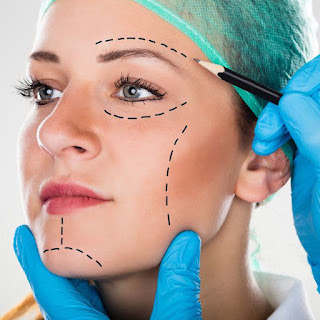Redefining Balance: Your Guide to Modern Rhinoplasty (Nose Job)
By Dr. Pawan Shahane, Senior Cosmetic Surgeon, Mayflower Clinic, Nagpur
The nose is the most defining feature of the face. Its shape and size impact your entire facial symmetry and balance. For many, a nose that feels disproportionate—whether it's too large, too wide, has an unwanted hump, or is crooked—can be a significant source of self-consciousness.
Rhinoplasty, commonly known as a nose job, is one of the most transformative plastic surgery procedures. It is not just about changing the size of the nose; it’s about refining the nasal structure to bring it into harmonious balance with your other facial features, thereby boosting self-confidence.
At Mayflower Clinic in Nagpur, we approach rhinoplasty as both a science and an art, ensuring the results look natural, elegant, and perfectly tailored to your face.
What is Rhinoplasty and Why Do People Choose It?
Rhinoplasty is a surgical procedure designed to change the size, shape, and overall appearance of the nose. It involves modifying the bone, cartilage, and soft tissues.
People seek rhinoplasty for two main reasons:
1. Aesthetic (Cosmetic) Reasons
Correcting a Dorsal Hump: Smoothing out the bump on the bridge of the nose.
Refining the Tip: Making a bulbous, drooping, or poorly defined nasal tip sharper and more refined.
Adjusting Size and Width: Making a nose smaller, narrower, or better proportioned to the face.
Correcting Asymmetry: Straightening a nose that is naturally crooked or damaged from an injury.
2. Functional Reasons (Septoplasty)
In many cases, cosmetic concerns are combined with breathing issues. If the nasal septum (the wall separating the nostrils) is deviated, it can block airflow. A rhinoplasty often includes a septoplasty to straighten the septum, dramatically improving breathing. This is called Septorhinoplasty.
The Art and Technique of Rhinoplasty
Modern rhinoplasty aims for subtle, natural improvement—not a drastically altered appearance. As an experienced plastic surgeon, I rely on advanced techniques tailored to each patient's unique anatomy:
Open vs. Closed Approach
| Technique | Description | Advantage |
| Open Rhinoplasty | A small, external incision is made across the columella (the strip of tissue between the nostrils). | Allows for maximum visibility and precision, crucial for complex tip refinement and structural changes. |
| Closed Rhinoplasty | Incisions are confined to the inside of the nose. | Results in no external scarring. Best for minor adjustments, primarily to the bridge. |
Structural Changes
The procedure involves meticulously adjusting the internal framework:
Reduction: Removing excess bone or cartilage (e.g., shaving down a hump) to reduce size.
Augmentation: Adding , silicon implant or cartilage (often taken from the septum, ear, or rib) to build up the bridge or tip, common in ethnic rhinoplasty.
Suturing Techniques: Using specialized sutures to reshape and stabilize the cartilage of the nasal tip for a permanent, refined shape.
The Mayflower Consultation and Planning Process
The success of a rhinoplasty is entirely dependent on meticulous planning. At Mayflower Clinic, our process is highly personalized:
Mutual Goal Setting: We discuss your specific concerns and expectations. We use digital imaging software to visually demonstrate potential outcomes, ensuring your goals are realistic and achievable.
Detailed Analysis: I perform a thorough examination of your nasal anatomy, skin thickness, and breathing passages.
Collaborative Expertise: With the presence of Dr. Mrs. Shahane (Gynecologist with expertise in breast surgeries), female patients often feel an added layer of comfort and perspective during this sensitive consultation phase.
Customized Plan: We decide together whether an open or closed approach is best and determine the necessary modifications to cartilage and bone to achieve facial harmony.
Recovery and Results
Rhinoplasty requires patience, as the final results emerge over time.
| Phase | Timeline | Key Expectation |
| Immediately Post-Op | Day 1–7 | A splint and packing will be in place. Swelling and bruising around the eyes are normal. |
| Return to Work | 7–10 Days | The external splint is typically removed after one week. You can return to light, non-strenuous activities. |
| Social Recovery | 2–3 Weeks | Most noticeable swelling and bruising have subsided, and you are ready for social engagements. |
| Initial Results | 1–3 Months | 80% of swelling resolves, and you can appreciate the changes. |
| Final Results | 12–18 Months | The nose tip, which swells the most, fully settles and the final contour is achieved. |
Why Choose Dr. Pawan Shahane for Rhinoplasty in Nagpur?
Choosing a board-certified plastic surgeon is essential for a complex procedure like rhinoplasty.
Specialized Expertise: I am trained in advanced cosmetic surgical techniques, ensuring precise modification of the delicate nasal structures.
Focus on Function and Form: My approach ensures that while we enhance the aesthetics of your nose, we also prioritize and often improve your nasal breathing.
Natural Aesthetics: My goal is to create a nose that looks like it naturally belongs on your face—not one that looks "done."
Team Support: Our clinic offers unparalleled patient care, including the comfort and guidance provided by Dr. Mrs. Shahane.
Rhinoplasty is a journey toward greater self-acceptance and confidence. If you are considering reshaping your nose, prioritize expertise, safety, and a personalized approach. Contact Mayflower Clinic in Nagpur today to begin your confidential consultation.
.jpeg)


Comments
Post a Comment